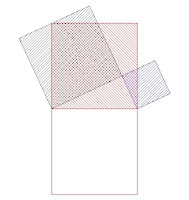 |
| Man changing stock quotes on a chalk board. NYPL Digital Gallery |
My brother, Zack, was here visiting the other night. My 12 year old son had a question about his fraction homework, and this sparked a conversation between Zack and me about how fractions are taught in school.
Zack said, “Fractions are a useless implementation of decimals.”
Hmm. Zack worked in finance for many years as a derivatives trader. I never really understood what he did besides the fact that it entailed making split second decisions involving lots of money and using insane spreadsheets. Zack is still my go-to person when I need help writing a really complicated spreadsheet formula or macro. Not only does he understand what I’m saying, but he has the answer in .9 of a second or less.
Here is a video of Zack sharing his thoughts on fractions. I hope it sparks some interesting conversation for readers of this blog. I brought this up with my colleague, Penny Stearns, who expressed a completely different perspective from Zack. Perhaps she will star in a video rebuttal at some point. Professor Tim Whiteford weighed in with still more to think about. What an excellent topic for students to question and debate in order to deepen their understanding of the application of fractions and decimals in different contexts.



